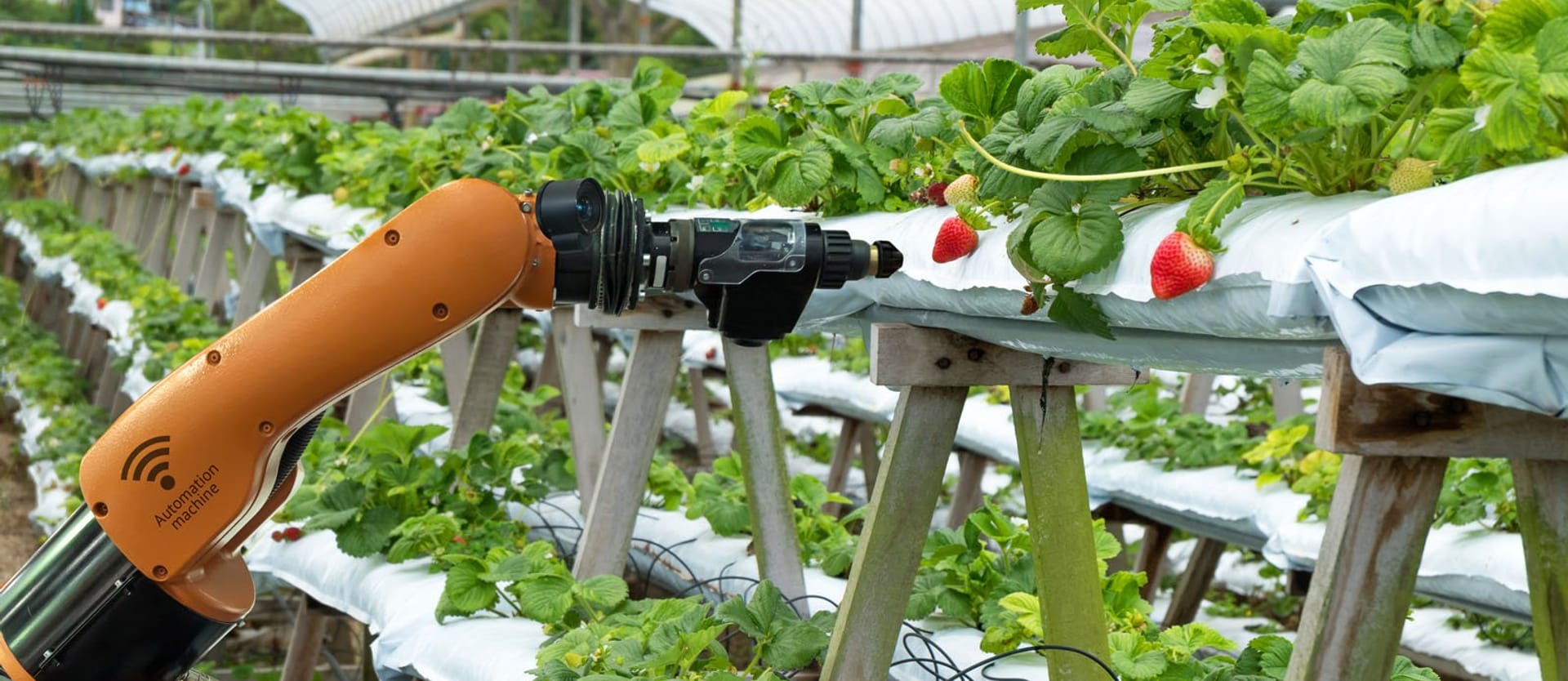Before you finish reading this article, hundreds of new devices will be connected to the web at a breathtaking pace of 127 additions per minute. For the most part, they belong to the Internet of Things (IoT), or gadgets capable of communicating and sharing data without human interaction.
The technology will shift into an even higher gear with the arrival of fifth-generation or 5G networks supporting a million gadgets per square kilometer — ten times as many as in the 4G era. The number of active IoT connections is expected to double by 2025, surging from today's 9.9 billion to 21.5 billion.
The growth in connected devices over the 2015-2025 decade. Source: IoT Analytics
Day by day, the IoT sees wider adoption, opening new opportunities and driving more value to both businesses and their clients. For companies, incorporating the consistent IoT strategy into daily routine means continuous access to valuable data about products and processes that can be translated into reduced expenses, improved efficiency in logistics and maintenance, better products, and enhanced customer experience.
But to build and run a robust infrastructure, a manufacturer or service provider needs a solid foundation — in other words, an IoT platform that connects devices, collects data, and creates insights. This article will explain the IoT ecosystem, outline the core IoT platform functionality, and compare major players to help you make the right choice.
IoT architecture layers
With an IoT platform acting as a bridge between the physical world and business processes, the IoT infrastructure contains several key layers:
- perception layer (hardware components such as sensors, actuators, and devices),
- transport layer (networks and gateway),
- processing layer (middleware or IoT platforms), and
- application layer (software solutions for end users).
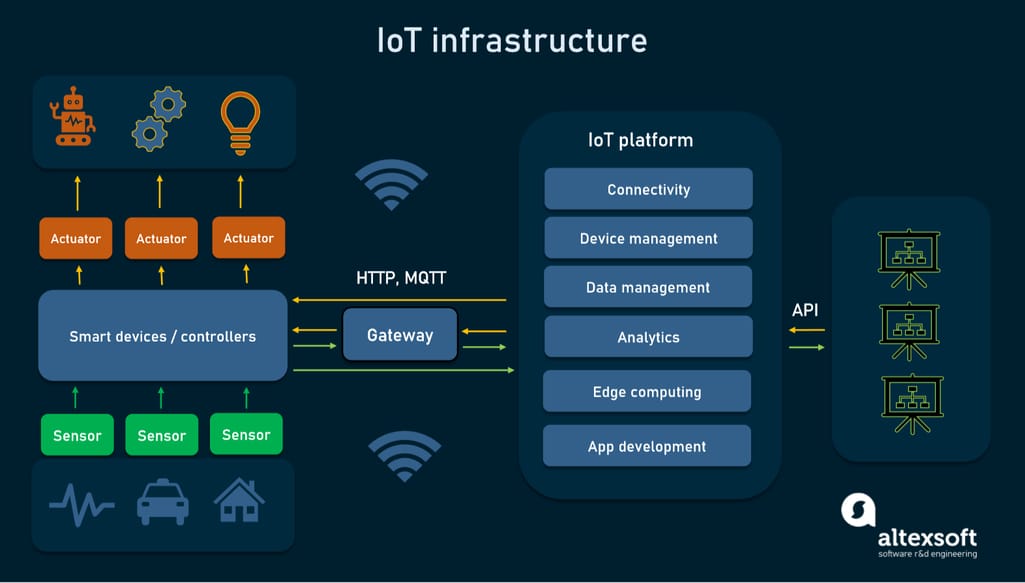
How an IoT system works.
Perception layer: IoT hardware
The hardware or “things” layer includes the following gears that work with signals from the physical world.
Electronic sensors capture signals from the physical world, convert them into digital form, and feed them to the IoT system. You can monitor and manage sensors remotely, using a special application.
Actuators receive signals from the IoT system and translate them into physical actions manipulating equipment. Similar to sensors, actuators can be configured from remote computers.
Devices are connected to sensors or even have them embedded as an integral part. On the other side, devices link to a gateway or directly to an IoT platform. These hardware components cache and preprocess real-time data, reducing the burden on central storages and main processors.
Transport layer: networks and gateways
The transport layer is responsible for smooth and secure data transmission from perception layer to processing layer. It encompasses wired or wireless networks and a gateway — a hardware or software module that consolidates data from devices, analyzes it, performs translation between different protocols, and forwards information to the cloud. As a rule, the gateway converts all information into MQTT messages — the lightweight protocol most widely used in the IoT.
Processing layer: cloud middleware or IoT platforms
Here we come to an IoT platform or middleware that actually drives IoT, enabling you to get all components and data streams connected. On the one side, it links to gateways or devices, and on the other side integrates with third-party applications and systems via APIs.
Typically, fully-fledged platforms take care of such important tasks:
- connectivity or ensuring smooth data streaming and interactions between all IoT components;
- device management, which enables you to control and configure each piece of hardware in the IoT network as well as update software running on devices and gateways;
- data management, including data collection, processing, and storage;
- data analysis for extracting valuable patterns with machine learning, predictive analytics, and other methods;
- visualization or displaying data findings in the form of charts, graphs, 2D or 3D models;
- digital twin or creating the virtual representation of a device;
- IoT app development — platforms provide a workspace with a set of tools and templates to speed up app designing; and
- edge / fog computing — the practice of processing and storing data on devices, microcontrollers, gateways, and other IoT nodes to reduce burden for cloud servers.
Application layer: software solutions for users
IoT software solutions allow end users to gain data insights, monitor and control devices, and, generally, manipulate the physical world through the IoT platform from computers and / or smartphones. Applications can be built on top of the IoT platform or integrate with it through APIs.
Now, with the place of IoT platforms in the connected ecosystem more clearly defined, let’s concentrate on their functions, options available on the market, and how to choose between them.
IoT platform landscape and key players
By the end of 2019, the total number of known IoT platforms reached 620, with half of them focusing on manufacturing and industrial use (IIoT). Other popular activity areas are energy, mobility, smart cities, and healthcare.
The largest target areas for IoT platforms. Source: IoT Analytics
Fragmented and unconsolidated, the IoT platform market nonetheless has several major players enjoying the largest market share. The list of the top five, fully-fledged solutions in alphabetical order is as follows:
- Amazon Web Service (AWS) IoT platform,
- Cisco IoT,
- Google Cloud IoT,
- IBM Watson IoT platform, and
- Microsoft Azure IoT.
Top five solutions for building IoT.
All five options have a core solution with basic functionality and a set of additional modules you can add when necessary. Below, we’ll explore building blocks of key platforms in more detail.
AWS IoT Platform: the best place to build smart cities
Key use cases: smart city, connected home, agriculture, healthcare.
Key strengths: large variety of available services, rich development environment to simplify and accelerate IoT app designing.
Backed by the public cloud leader, this IoT platform has users across 190 countries. In addition to a broad sets of tools, it offers easy integrations with other popular AWS services taking advantage of Amazon’s scalable storage, computing power, and advanced AI capabilities.
In 2020, AWS was recognized as a leading IoT applications platform empowering smart cities. It is also in the forefront of building connected home products, powered by Alexa Voice. Among successful use cases in other domains are projects for Philips HealthCare, Rio Tinto (the world’s second largest metals and mining corporation), and Bayer Crops Science (agriculture).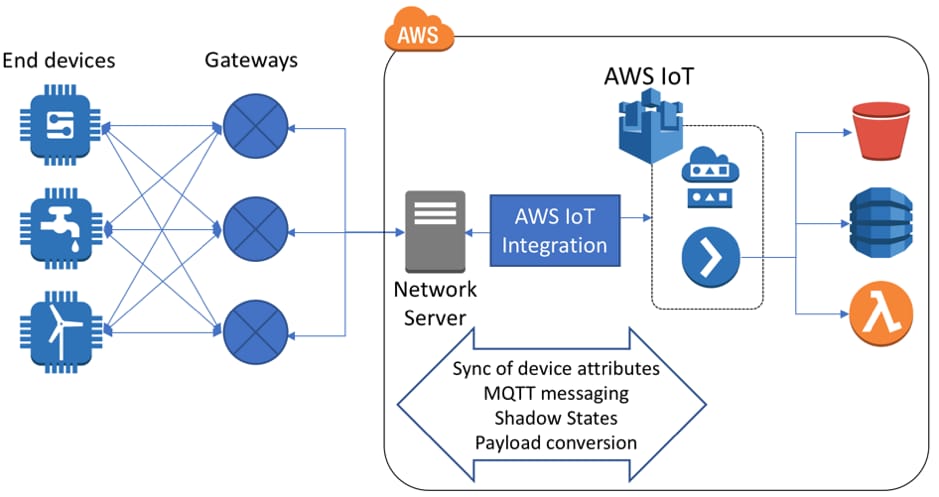
AWS IoT infrastructure. Source: AWS
AWS IoT Core
IoT Core is the heart of the AWS IoT suite, which manages device authentication, connection, and communication with AWS services and each other. Its entry point — Device Gateway — supports MQTT, HTTP, and WebSocket protocols. Amazon claims that the module is scalable enough to handle over a billion devices, with each of them being assigned a unique identity. Due to authentication and encryption provided at all points of connection, IoT Core and devices never exchange unverified data.
Vetted messages are processed by the Rules Engine that routes them either to a device or cloud AWS service — like AWS Lambda (a serverless computing platform), Amazon Kinesis (a solution for processing big data in real time), Amazon S3 (a storage service), to name a few.
Another useful feature of IoT Core is Device Shadow, which stores the current or desired state of every device. So if the IoT device is offline or busy, cloud applications can still change its configuration or send commands to it. As soon as the device is back online, it synchronizes its final state with updates.
Of five platforms, AWS IoT Core is the most popular choice among programmers, and for a reason. It offers SDKs for Android and iOS applications as well as for Embedded C, C++, JavaScript, and Python. Amazon speeds up development by providing a large collection of templates along with a visual drag-and-drop tool called IoT Things Graph that simplifies building workflows across IoT components.
Additional AWS IoT control services
You can complete IoT Core functionality with the following optional services.
AWS IoT Device Management allows you to remotely organize, track, control, update, and scale large and diverse device fleets. Agnostic to a device type, the service supports any IoT thing, from microcontrollers to connected fridges.
AWS IoT Device Defender continuously checks IoT configurations against security requirements and sends alerts when spotting any gaps.
AWS IoT Events is designed to identify complicated changes in equipment behavior across thousands of devices and react to them based on predefined rules.
AWS SiteWise comes in handy when you need to collect and organize data at an industrial level. The service connects to a manufacturer’s equipment through a gateway, gathers and pre-processes data, and then sends it to the AWS Cloud.
AWS IoT 1-Click is used to make a group of devices perform specific actions (like sending alert messages) at a button click.
AWS IoT Analytics
The core intelligent solution, AWS IoT Analytics, automatically collects and cleans data before transmitting it to a time-series storage for further analysis. The service enables you to enrich information streamed by devices with data from external sources.
IoT Analytics has templates to build predictive maintenance models. It easily integrates with
- Amazon QuickSight, a business intelligence service to visualize data insights,
- Jupyter Notebook that provides powerful tools for machine learning and advanced statistical analysis, and
- Amazon SageMaker, an environment for building, training, and deployment of machine learning models.
Edge computing stack
Amazon facilitates edge computing by providing a real-time operating system for microcontrollers called FreeRTOS. The freely distributed technology allows you to easily program low-power devices and securely connect them to IoT Core, other AWS services, and hardware components.
Also, you can extend analytical, management, and other Amazon capabilities to more powerful equipment by using AWS IoT GreenGrass. The service enables you to write code in the cloud and then deploy it on devices to be executed locally.
Cisco IoT: the edge computing leader with the largest fleet of connected cars
Key use cases: connected vehicles, manufacturing, smart cities, utilities.
Key strengths: mobile connectivity, environment for edge computing, 5G readiness.
Best known for its networking equipment, Cisco is currently leading the IoT market in terms of edge infrastructure development. The very term fog computing or processing data on edge devices (controllers, gateways, routers, and so on) was coined by Cisco experts. The company is heavily investing in software and hardware to distribute workloads across multiple nodes and minimize latency of the growing IoT systems.
Over 67,000 customers take advantage of two Cisco IoT platforms: IoT Control Center (ex-Jasper) for enterprise-grade companies, with the focus on cellular connectivity, and Kinetic Operations Platform for both cellular and non-cellular devices.
Cisco IoT Control Center
IoT Control Center is the largest cellular connectivity platform servicing over 160 million mobile devices and 29,000 enterprise-grade customers worldwide. The middleware is also known as the number one service provider for connected cars.
More than 4 million devices are added to the middleware every month to take advantage of the connectivity capabilities such as:
- machine learning. The Control Center analyzes 3 billion events a day to improve connectivity management, identify anomalies, and proactively address issues, increasing security.
- eSIM as a service. This tool simplifies SIM portability between different operators worldwide. The eSIM service allows for creating the local profile of a SIM card embedded in an IoT device — instead of building complex integrations between different service providers.
- 5G readiness. The platform already supports 5G non-standalone (NSA) resting upon the existing 4G infrastructure. By the end of 2020, the company is going to add 5G standalone (SA) indicationg the creation of a new separate network.
Cisco Kinetic IoT operations platform
Cisco Kinetic comprises three components teamed up to connect devices of any type and manage data both at the edge of the network and in the cloud. The platform is compatible with Cisco networking hardware, however, it works with some third-party products recommended by Cisco.
The Gateway Management Module monitors industrial gateways and enables their remote configuration.
The Edge and Fog Processing Module pushes selected data management processes from the cloud to nodes and devices closer to data sources.
The Data Control Module performs the opposite function and moves data from devices to cloud-based applications, ensuring that the right information will reach the right place. You can create rules for different apps depending on the data type. The module is cloud-neutral, so you are free to use any cloud provider for data storage and management.
Edge computing stack
The software part of Cisco’s edge computing offering includes two major solutions.
Cisco IOx is a Linux-based environment to manage fog applications over the network. Cisco provides development tools and guidelines for app building within the IOx ecosystem. But you can also use out-of-the-box solutions by Cisco and its partners.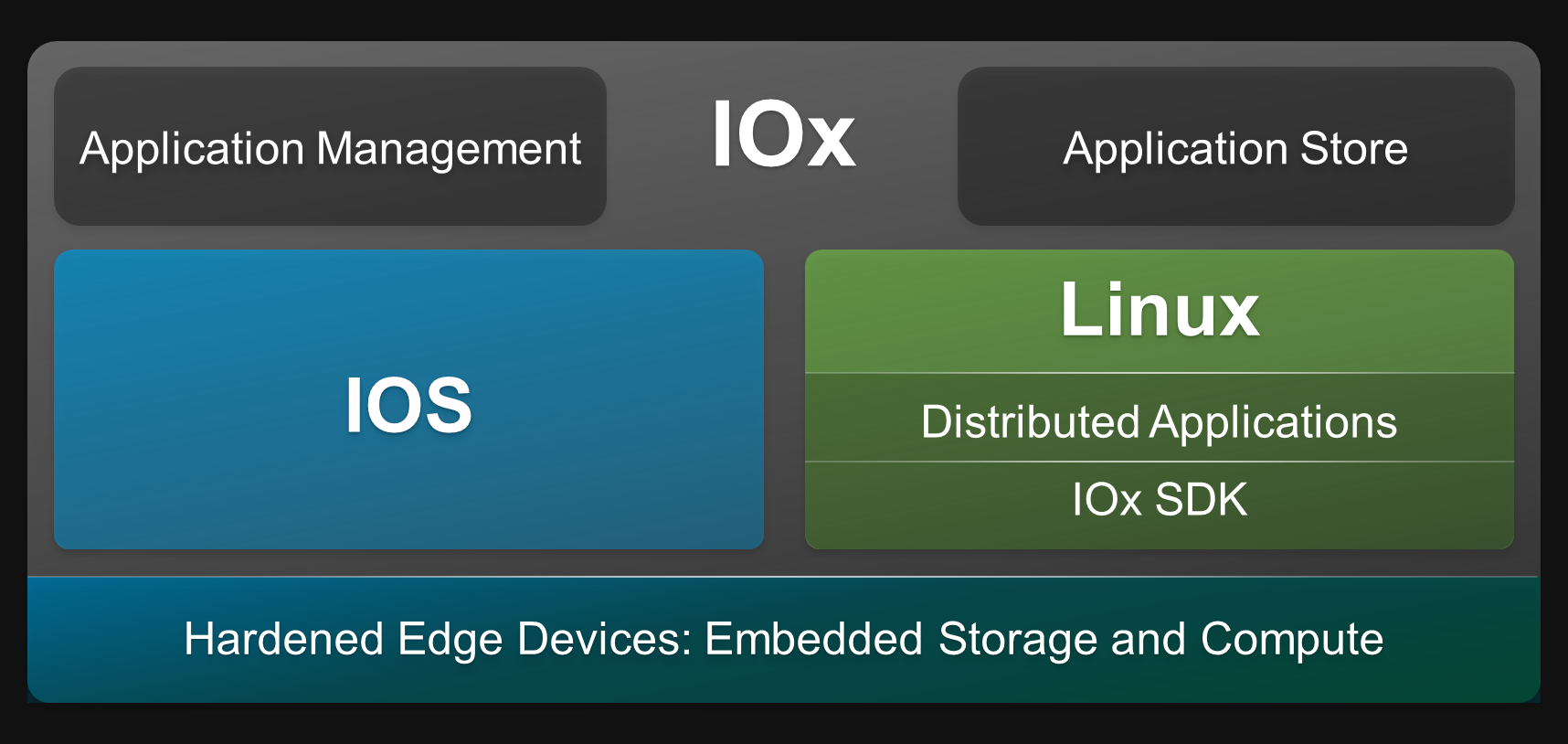
IOx environment structure. Source: Cisco Blogs
Cisco Edge Intelligence is designed to extract data from nodes, analyze and then send it to the right applications for further processing and getting insights. Cisco is collaborating with Microsoft to combine Edge Intelligence with Azure IoT Hub for smooth data transferring from IoT devices to apps in the Azure cloud. The solution also comes pre-integrated with Software AG Cloud and Quantela, a smart city automation and AI platform.
Google Cloud IoT: driving transportation with Google Maps
Key use cases: energy, manufacturing, logistics and transportation, smart cities.
Key strengths: data analytics and visualization, wide range of available cloud services.
The IoT suite from the most popular search engine is centered around its flagship product Cloud IoT Core, powerful enough to manage data from millions of devices. Teamed up with other Google Cloud services, it is already optimizing operations in manufacturing, building, energy, and other sectors. Its transportation and smart city solutions take advantage of Google Maps Platform allowing for visualization of geographical data.
Google Cloud IoT Core
Google IoT Core contains two modules. Device Manager enables you to set up, authenticate, configure, and control individual devices remotely. While Protocol Bridge working with MQTT and HTTP formats is responsible for connectivity. It publishes data streams to Cloud Pub/Sub service that make possible merging messages from different sources into a single system.
From Cloud Pub/Sub data is forwarded to other Google cloud services. You may use
- Cloud Functions to create independent functions and instruct devices how to react on specific events,
- Cloud Dataflow to preprocess data in real time,
- Cloud Bigtable to ingest and store large volumes of data,
- BigQuery to analyze data in real time, create and train machine learning models,
- Data Studio to visualize insights extracted from BigQuery, using pre-built templates, and
- Cloud Datalab to develop custom analytics practices and visualizations.
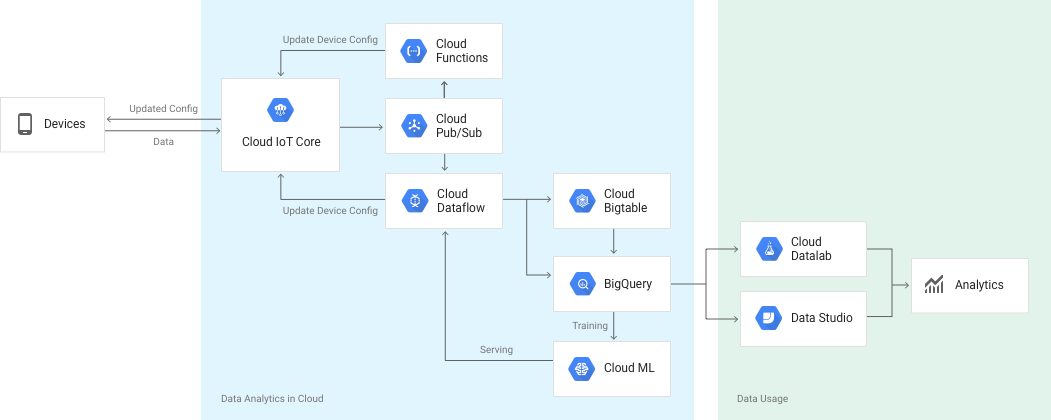
Cloud IoT Core integrations. Source: Google Cloud
Edge computing stack
In March 2020, Google announced a partnership with AT&T, the world’s largest telecommunication company by revenue. Two giants are working together on a portfolio of edge computing solutions that will use Google’s AI/ML capabilities and support 5G connectivity. For now, edge computing and AI in the Google IoT ecosystem is performed via its branded Edge TPU chip.
IBM IoT suite: bringing intelligence to fields and factories
Key use cases: manufacturing, agriculture, smart buildings, logistics and transportation.
Key strengths: real-time insights and predictive analytics with machine learning and AI.
IBM combines IoT with powerful cognitive capabilities of Watson platform — an industry leader in AI and machine learning. Its assortment of AI-driven IoT products includes Watson Decision Platform for agriculture, Watson Supply Chain Insights for connected logistics and transportation, Watson Building Insights for analyzing energy and asset usage, and a set of industrial equipment solutions.
IBM Watson IoT Platform
The IoT platform by IBM leads the pack of industrial solutions supporting predictive maintenance. Built on the highest security standards, it serves as a hub to set up and control connected things that use MQTT messaging. The basic offering includes:
- device management service to add and remove devices individually or in bulk, perform rebooting, update firmware, receive metadata, and so on,
- safe connectivity and communication between devices based on MQTT protocol messaging; and
- data lifecycle management, which enables you to store data from devices and access real-time and historical data whenever you need it.
But you can augment these basic capabilities with advanced AI-driven analytics for gaining real-time insights and blockchain service to add selected IoT data to the ledger and share it with specific clients and partners.
Digital Twins
IBM’ s Digital Twins is a separate offering that by far outreaches virtual replicas of devices delivered by AWS and Microsoft Azure. Having worked with the concept since the Apollo space program, IBM creates complex digital twins of huge systems and products. This approach enables you to run simulations and perform what-if analyses of physical objects and make decisions on how to improve their efficiency.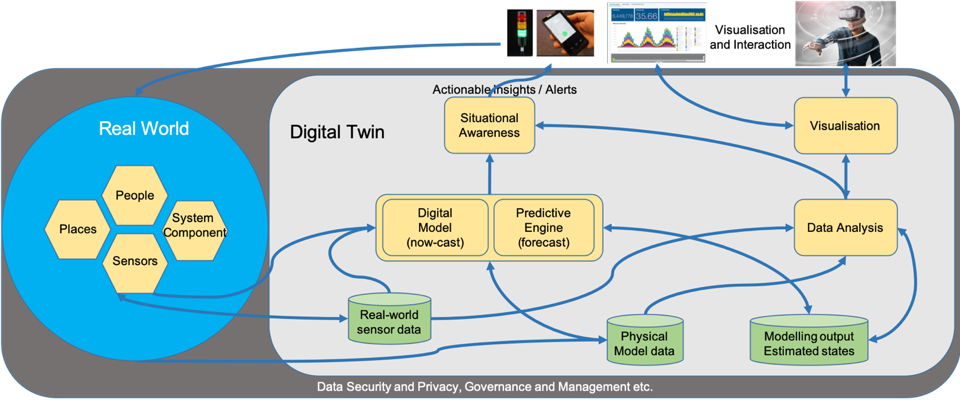
Digital Twin components. Source: IBM Developer
IBM Edge Application Manager
IBM has a separate platform to build analytics applications and then deploy, monitor, maintain, and scale them across thousands of devices, gateways, servers, and other edge nodes. IBM expects that edge computing capabilities will be revealed in full with the transition to 5G.
Microsoft Azure IoT: ahead of the pack in healthcare and security
Key use cases: healthcare, retail, manufacturing, logistics and transportation.
Key strengths: robust core middleware, enhanced security, Windows for IoT.
In 2018, Microsoft declared their intentions to pour $5 billion into IoT technologies within four years. Now, at the halfway mark, its Azure IoT suite features a wide range of tools for all sorts of devices, with more additions to come in the next two years.
Azure has a strong footprint in healthcare, retail, manufacturing, energy, logistics and transportation. All the solutions come with the highest level of safety as Microsoft spends over $1 billion annually on cybersecurity technologies.
The presence of Microsoft in the IoT ecosystem is expanded by Windows 10 IoT. The Enterprise version is meant for ATMs, point-of-sale terminals, medical equipment, kiosks. Windows 10 IoT Core runs on small devices and wearables, with or without display.
Azure IoT Hub
IoT Hub is the foundational PaaS (platform-as-a-service) product, enabling device connectivity, management and communication. It comes in two tiers, basic and standard, with a different number of features supported. The basic tier provides services like:
- device-to-cloud messaging;
- device authentication;
- support for HTTP, MQTT, and AMQP protocols; and
- device monitoring and diagnostics.
If you need to control IoT devices remotely and distribute workloads across network, then you should consider the standard tier that adds
- cloud-to-device messaging,
- device management,
- device and module twins or storing information about the current and desired properties of devices and their components (modules), and
- IoT Edge to create program modules and deploy them across the network nodes.
Azure IoT Central
IoT Central is a scalable SaaS (software-as-a-service) offering rapid design of IoT software with built-in security features. The platform comes with the integrated device monitoring and management functions to connect, reconfigure, and update devices.
The module includes numerous application templates for different industries to accelerate development speed. If combined with Azure IoT Hub, it enables building more complex apps, capable of supporting millions of devices.
Additional IoT services
The collection of IoT-related solutions complement core platforms, extending their capabilities.
Azure Digital Twins lets you create virtual models of a physical environment based on insights extracted from IoT data. These models can be used to reorganize the infrastructure for better efficiency.
Azure Sphere is a security solution to protect IoT devices, operating systems, and cloud services. It adds multiple layers of defense, provides continuous device monitoring, and enables returning compromised hardware components to their safe states.
Time Series Insights extracts data directly from IoT Hub to explore it, spot trends, identify anomalies, and present findings in the form of comprehensive visualizations. The solution easily integrates with other analytics services by Microsoft like Azure Machine Learning and Azure Databricks.
How to choose the best IoT platform
As you can see, IoT platforms features basically overlap, though they are packaged differently. Along with a rich functionality, all of them offer
- high scalability, fitting the needs of any business, from startups to enterprises with millions of devices;
- built-in security for every layer of an IoT system; and
- tech support and detailed documentation on their products.
The question is, how do you choose the best option among five equal worth leaders? There are several things to consider before making the final decision.
Pricing and free tier
IoT costs are often hard to predict, as the core solution typically includes only a limited set of functions. Every single service you use on top of basic features involves additional expenses.
All platforms stick to a pay-as-you-go model, so the total price will depend on volume of use — or the number of messages or megabytes exchanged, devices connected, actions executed, and so on. Besides, the pricing may vary across regions.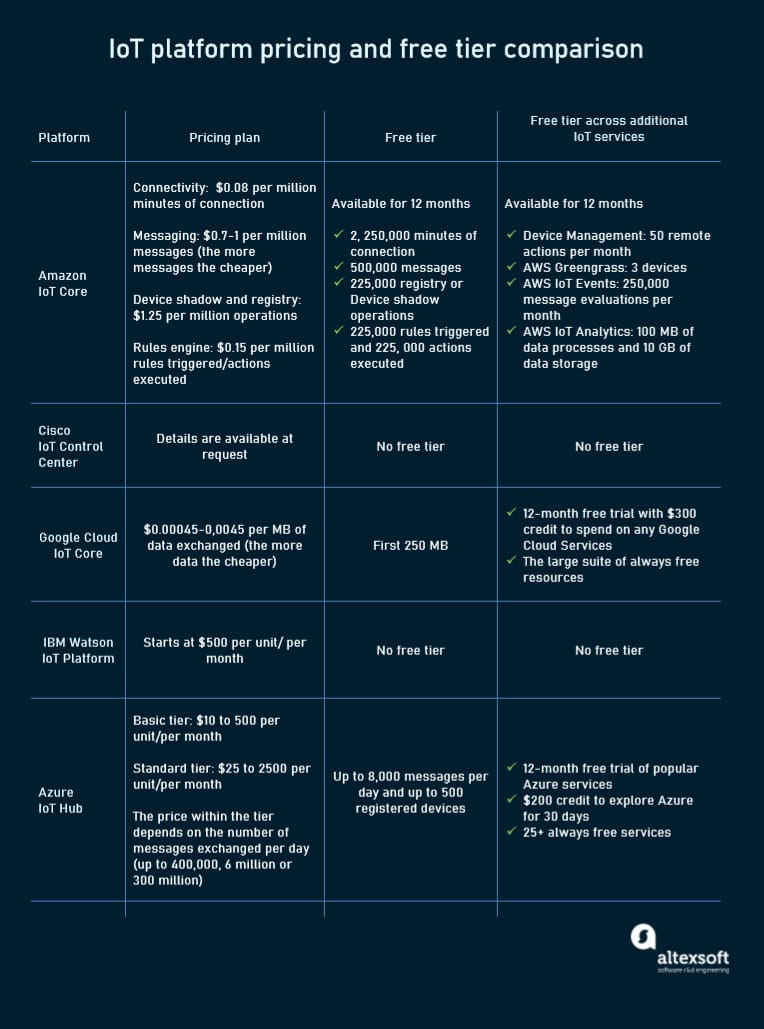
What will it cost to run IoT?
To address the pricing model complexity, Amazon, Google, and Microsoft offer their customers a pricing calculator located on their official website. But often the only way to estimate your IoT project cost is to run it for a month and pay the bill. Multiple reviews show that AWS tends to be the most expensive option, followed by Google and Microsoft Azure as the cheapest of the trio. As for IBM and Cisco, their pricing details are available on request.
Amazon, Google, and Microsoft also enable potential clients to make a proof of concept using their free tier plans. So, you can test whether the platform meets your requirements before starting to invest into particular services.
Hardware compatibility
IoT infrastructure involves numerous devices. If you already use certain equipment, network nodes, and other components, you must check whether your existing hardware is compatible with a particular platform. For example, Cisco IoT software is designed to work smoothly with Cisco IoT hardware.
On the other hand, Amazon and Microsoft Azure view themselves as hardware agnostic and support mist of IoT devices. Anyway, to be on the safe side, look through the lists of hardware approved by a software provider you are interested in:
Amazon Device Qualification Partners
Azure certified IoT hardware
Google Cloud Platform partners
IBM Business Partners
Domain expertise
Though all platforms work across several industries, each of them can outperform others in a particular domain. For example, if you run a big enterprise with complex infrastructure and millions of sensors, your natural choice will be IBM, boasting exclusive expertise in managing industrial equipment.
AWS is a good fit to implement a smart home scenario, while Cisco will bring most value to businesses dealing with connected vehicles. Cisco can also provide a good start for companies that build their IoT infrastructure from the ground up, offering all necessary hardware, software, and connectivity services. Microsoft proved its efficiency in the Internet of Medical Things (IoMT), and Google has convincing use cases in energy, transportation, and building smart parks.
Remember, that your choice is not limited to the five leading platforms. There are still over 600 other options waiting in the queue, and chances are high that one of them will meet your needs even better than tech leaders.
